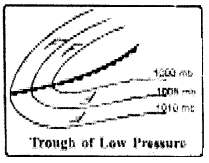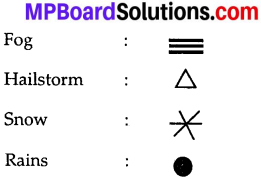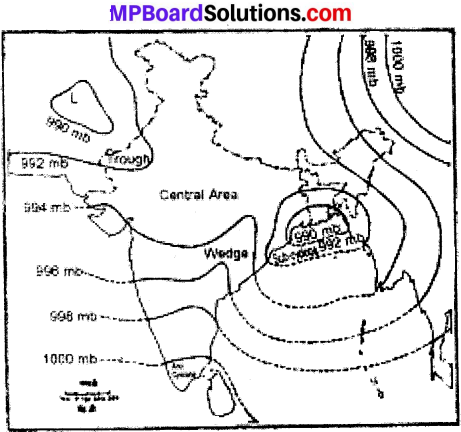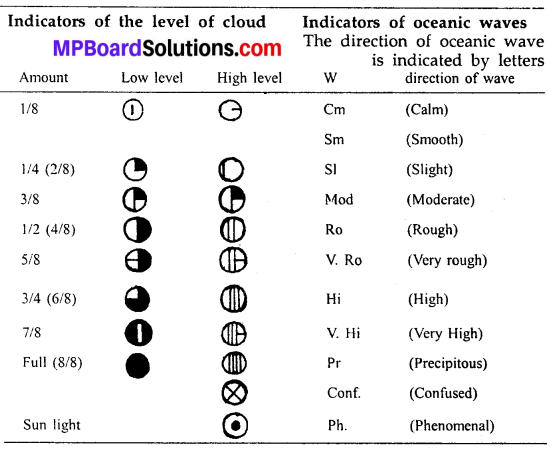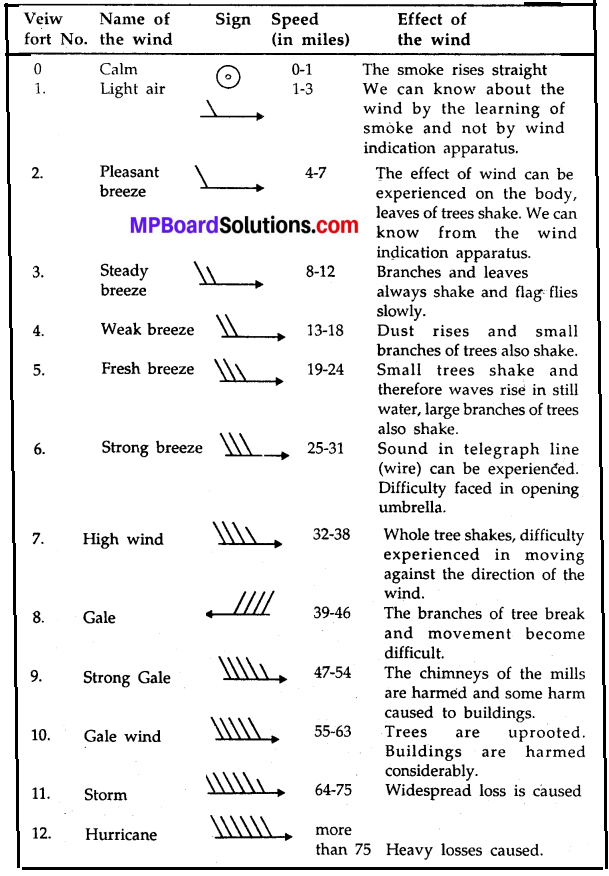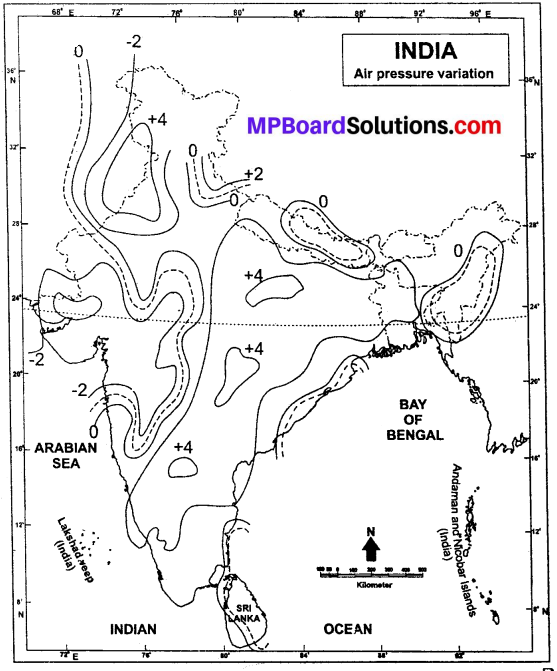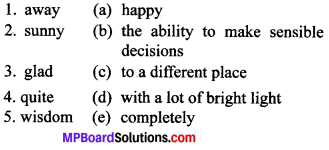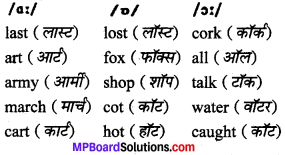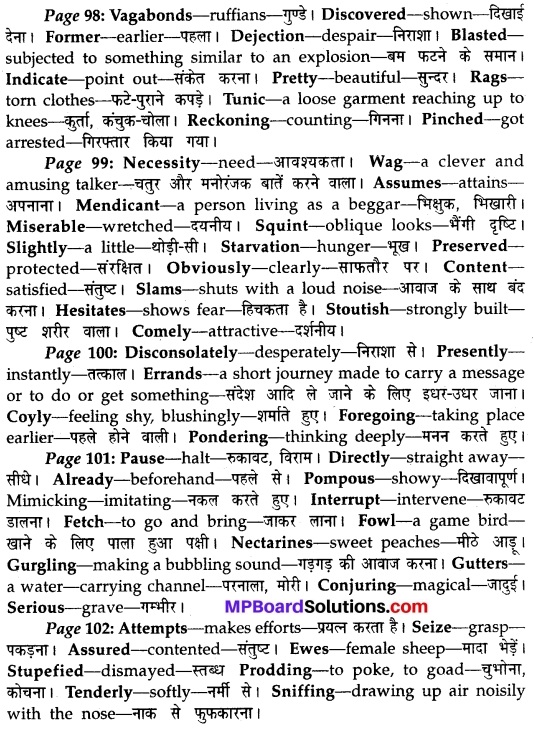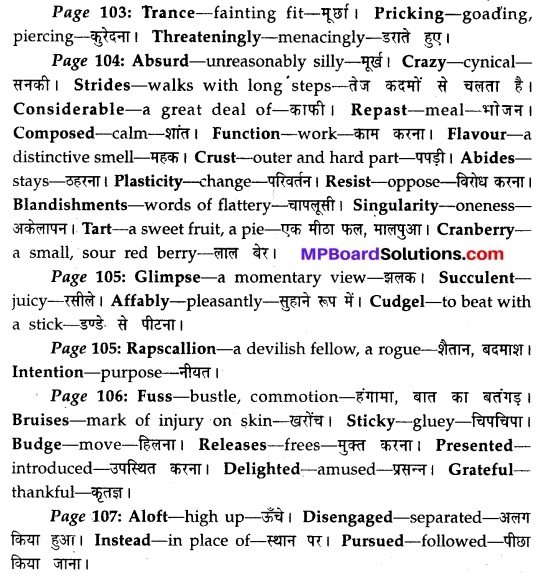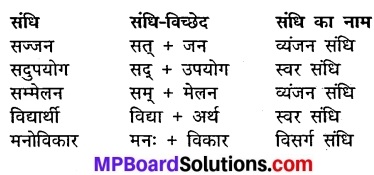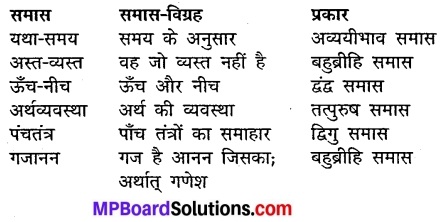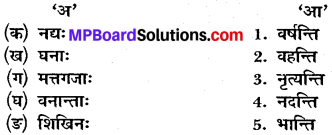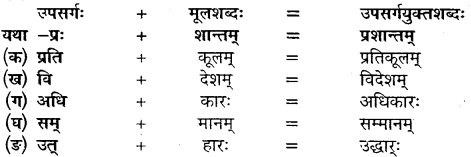Are you seeking for the Madhya Pradesh Board Solutions 10th English Chapter 6 Two Gentlemen of Verona Questions and Answers PDF? If yes, then read this entire page. Here, we are giving a direct link to download MP Board Class 10th English Solutions Questions and Answers PDF which contains the chapter wise questions, solutions, and grammar topics. You can also get the shortcuts to solve the grammar related questions on this page.
MP Board Class 10th English The Rainbow Solutions Chapter 6 Two Gentlemen of Verona(A.J.Cronin)
For the sake of students we have gathered the complete 10th English Chapter 6 Two Gentlemen of Verona Questions and Answers can provided in pdf Pattern. Refer the chapter wise MP Board Class 10th English Solutions Questions and Answers Topics and start the preparation. You can estimate the importance of each chapter, find important English grammar concepts which are having more weightage. Concentrate on the important grammar topics from Madhya Pradesh Board Solutions for 10th English Chapter 6 Two Gentlemen of Verona Questions and Answers PDF, prepare well for the exam.
Two Gentlemen of Verona Textbook Exercises
Two Gentlemen of Verona Class 10 Vocabulary
I. Find one word from the text for each of the following group of words:
(i) spoke in low voice
(ii) a very small enclosed division of a larger room
(iii) interfere in an annoying way
(iv) place to which one travels
(v) shut and opened the eyes.
Answer:
(i) murmured
(ii) cubicle
(iii) interrupt/intrude
(iv) destination
(v) blinked.
II. Complete the following sentences choosing the right word/ words given within brackets:
(i) We bought their biggest basket then ……………… (set in, set against, set off, set upon) towards town.
(ii) One could see ………….. (at a glance, a glimpse of, in a glance, off) her resemblance to her brothers.
(iii) The boys grew…………… (in, on, for, to) hate the Germans.
(iv) You both ………… (see, look, watch, observe) rather tired.
(v) She answered all our questions perfectly; she never put a …………..(leg, hand, foot, finger) wrong.
Answer:
(i) set off
(ii) at a glance
(iii) to
(iv) look
(v) finger
III. Read and learn how to say the following words:
Verona, Villa, Nicola, Juliet, Jacopo, Lucia.
Answer:
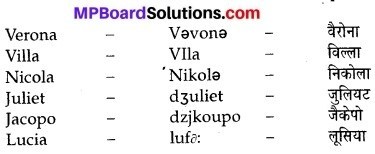
Comprehension
A. Answer the following questions in about 25 words.
Mp Board Class 10 English Chapter 6 Question 1.
What were the two boys doing when the author met them for the first time?
Answer:
The author was driving through the foothills of Alps. Two small boys stopped their car. They were selling wild strawberries when the author met them for the first time.
Two Gentlemen Of Verona Class 10 Questions With Answers MP Board Question 2.
Why did Luigi, the driver, try to stop the author form buying the fruit from the two boys?
Answer:
Luigi was the author’s driver. He tried to stop the author
from buying the fruit from the two boys because of the following two reasons:
(i) They could get fruit much better in Verona.
(ii) The two little boys wore dirty clothes and had shabby appearance.
Two Gentlemen Of Verona Class 10 MP Board Question 3.
Why were the author and his companion strangely attracted to the boys?
Answer:
The two boys were wearing worn-out and ill-sized clothes. The author and his companion gazed at their little figures. They . had brown skins, tangled hair and dark, earnest eyes. Therefore, they felt strangely attracted to them.
Class 10 English Chapter 6 Mp Board Question 4.
Cite some examples from the lessons, showing the boys’ willingness to do any work.
Answer:
Although the boys were very young, they did all the work with great willingness. They sold fruit and shined shoes during summer days under the hot sun. They also conducted tourists round the town even in bitter weather. They hawked newspapers after midnight. They ran errands even at odd times.
Mp Board Class 10 English Workbook Solutions Chapter 6 Question 5.
Why did the boys make a visit to the country every Sunday?
Answer:
The boys had a sister named Lucia. She was suffering from ; tuberculosis of the spine. She was admitted in a hospital at Poletain the country. Both the boys made a visit to see her and make payments every Sunday.
The Two Gentlemen Of Verona Question Answer MP Board Class 10th Question 6.
What sort of dwellings of the boys did the author imagine? What did he really find?
Answer:
The author thought that the boys were going home. He imagined that their destination would be a humble dwelling. He found a large red-roofed villa, surrounded by a high stone wall. It was the building of a hospital.
Two Gentlemen Of Verona Questions And Answers MP Board Class 10th Question 7.
What did the author see when he looked through the glass partition?
Answer:
The author desired to know where the two brothers had gone inside the hospital. The nurse made him look through the glass partition. He saw the boys seated at the bedside of a girl of about twenty and chatting with her.
Two Gentlemen Of Verona Class 10 Full Chapter MP Board Question 8.
Why did the author refuse to go into Lucia’s room?
Answer:
The author felt that he should not intrude upon the happy family party. Both the brothers were sitting at the bedside of their sister, Lucia. She was listening to their chatter reflecting brotherly affection for her. Therefore, he refused to go into Lucia’s room.
Chapter 6 English Class 10 Mp Board Question 9.
How did the war affect the family of the two boys?
Answer:
The war had devastated the family of the two boys. Their father, a well known singer, had been killed in the early part of the wan A bomb had destroyed their home. It had thrown the two boys and their sister into the streets. They suffered acute starvation and exposure to cold.
Two Gentlemen Of Verona Solutions MP Board Class 10th Question 10.
What was the secret that the author knew but the boys preferred to keep safely?
Answer:
The two boys had gone to the hospital to see their sister who was suffering from tuberculosis of the spine. They preferred to keep this secret safely. The author had seen everything with his own eyes. He knew this secret but he kept mum for the sake of the two little boys.
B. Answer the following questions in about 50 words.
The Gentlemen Of Verona Question Answers MP Board Class 10th Question 1.
What work did the boys do to earn some money? Why did they do so? (M.P. Board 2011)
Answer:
The boys did various works to earn some money. They sold strawberries at the outskirts of Verona. They shined shoes outside hotels. They conducted tourists round the town. They ran errands (for reservation of seats etc.). They also sold newspapers even after midnight. They did so in order to make payments for their sister’s treatment. She was suffering from tuberculosis of the spine and was admitted in a hospital.
Question 2.
How did the two boys look after their sister?
Answer:
When the two boys found that their sister was suffering from tuberculosis of the spine they took her to the hospital to Poleta. It was at a distance of 30′ kilometres from their place. They worked “day and night to pay for her treatment. Every Sunday they went to the hospital to see her and make payments. Usually’ they hired bicycles to reach the hospital. In this way they looked after their sister.
Question 3.
Summarise the story of the ‘Two Gentlemen of Verona’ as narrated by the nurse.
Answer:
Nicola, Jacopo and their sister, Lucia, belonged to a cultured family. War took their father’s life. Their sister was suffering from tuberculosis of the spine. They got her admitted to a hospital 30 kilometres away. They worked day and night. They earned quite little. They spent least money over their food and clothing. They saved money for their sister’s treatment. They hired bicycles and went every Sunday to see her and make weekly payments.
Question 4.
“The story of the ‘Two Gentlemen of Verona’ gives a promise of greater hope for human society.” Do you agree? Put in your arguments.
Answer:
I agree that the story of the ‘Two Gentlemen of Verona’ gives a promise of greater hope for human society. The two young boys do a lot of work to earn money. They spend least over their food and clothing to save maximum earning for the treatment of their sister who is suffering from tuberculosis of the spine and is admitted in a hospital. They show a great devotion to a noble cause.
Two Gentlemen of Verona Grammar
Study the following sentences:
| S.No. | A | B |
| 1. | The driver said, “You will get fruit much better.” | 1. The driver said that they would get fruit much better. |
| 2. | “I thought you picked fruit for a living,” I said. | 2. I said that I thought he picked fruit for a living. |
| 3. | “We do many things, Sir,” Nicola answered seriously. | 3. Nicola answered respectfully that they did many things. |
| 4. | He glanced at us hopefully, “Often we show visitors around the town.” | 4. He glanced at us hopefully and said that they showed visitors around the town. |
| 5. | “All right,” I smiled “You | 5. I smiled and said it was all |
| take us along.” | right that they took us along. |
There are two ways in which the words of a speakers can be reported.
1. We may quote the actual words used by the speaker as in column A. This is called Direct Narration or Direct Speech.
2. We may give the substance of the words used by the speaker and not his actual words as in column B. This is called Indirect Narration or Indirect or Reported Speech.
Study the following sentences:
| Reporting verb (Direct Narration) | Reported speech (Indirect Narration) |
| 1. They said, “We are waiting for the last bus from Padua.”
2. “We shall sell all our papers when it comes in”, said they. |
1. They said that they were waiting for the last bus from Padua.
2. They said that they would sell all their papers when it came in. |
Remember the following points about Direct speech:
- Direct speech is always enclosed with in inverted commas.
- It. always begins with a capital letter.
- It is separated from the Reporting verb by a comma.
Remember the following points about Indirect speech.
- No inverted commas are used.
- No comma is used after the Reporting verb.
- A conjunction-that, if, whether if necessary is used after the Reporting verb.
- The first letter of the Indirect Speech is not a capital one unless it begins with a proper name.
- The tense of Reporting verb is never changed.
- Tenses, pronouns and words expressing nearness are changed into words expressing distance in Indirect Speech.
Change the Form of Narration:
Question 1.
“We are not complaining, sir” said they.
Answer:
They said respectfully that they were not complaining.
Question 2.
“You must be saving to emigrate to America” I suggested.
Answer:
I suggested that they must be saving to emigrate to America.
Question 3.
“We should greatly like to go to the states”, said they.
Answer:
They said that they should greatly like to go to the States.
Question 4.
“Just plans, sir” he answered in a low voice.
Answer:
He answered in a low voice that they just had plans.
Question 5.
I answered “I’ll drive you out myself.”
Answer:
I answered that I would drive them out myself.
Question 6.
“Well” I said “We are leaving on Monday”.
Answer:
I said in earnestness (well) that we were leaving on Monday.
Or
I said, it is all right and told him that we were leaving on Monday.
Speaking Skill
1. We all have Monday morning blues and sometimes do not want to go to school. There are, however, many children in our country who do not go to school for other reasons. And quite often, even their parents do not want to send them to school. Form groups of four and discuss the following:
- On what pretext children absent themselves from schools?
- Reasons why children from some sections of society are not sent to school.
- What needs to be done to improve the attendance?
- What can you do for these children?
Answer:
For self-attempt.
Writing Skill
Question 1.
Write a letter to your sister residing at 20/3 Civil Lines, Raipur, in order to wish her a speedy recovery from breakdown in health. (50 words)
Answer:
To
20/3 Civil Lines, Raipur.
From Sarojini Apartment
Jail Road
Bhopal
18th July, 20xx
Dear Chameli,
I have learnt from your letter that you had fallen a victim to malaria fever last month. You took the best treatment but the fever did not subside. You are feeling quite weak due to breakdown in your health.
Take a glass or two of orange juice everyday. Do not go out in the sun or rain. Consult some doctor of repute lest the fever should aggravate typhoid. Take complete bed rest.
I wish you a speedy recovery. I shall come to see you next week. With regards.
Yours
Om Prakash Sharma.
Question 2.
“Small deeds of kindness are greater than the grandest intentions.” Expand the thought. (150 words)
Answer:
It is wisely said and believed that small deeds of kindness are greater than the grandest intentions. Only the sinners cook for themselves. One should feed the hungry and clothe the naked. Small deeds of kindness bring fame, prosperity and popularity. One who teaches the poor boys and girls one hour a day renders a great service to humanity.
A man who feeds the ants with a few pinches of flour everyday gains a lot with the passage of time. A man who gives water to the thirsty birds, animals or human beings, seeks their blessings which never go waste. One who gives a rupee in charity gets a million rupees in return.
If you feed one hungry man a day, you will get plenty of food from God. Small deeds of kindness can take various forms. If you give a tablet to a person and his fever subsides, he will never forget your kindness. Give shelter to those who have no shelter and earn an undying fame for yourself. If you intend to open charitable dispensaries or build a dharamshala, start doing small deeds like adopting an orphan. Then see the magical effect. God helps in a mysterious way. Only intention to do good will do nothing. Act for the good of humanity.
Think It Over
Question 1.
“No person was ever honoured for what he received but for what he gave”. Ponder and express your view.
Answer:
I agree with this statement. One who receives is a beggar and one who gives is a generous fellow. Nobody honours a receiver. It is always the giver who receives all the honour.
Question 2.
When we give with no thought of receiving, we automatically receive abundantly. Think and, if you find it true, give one example and write it.
Answer:
Giving something with no thought of receiving is a noble act of charity. It shows lack of greed. Benevolence is repaid manifold. One day I borrowed rupees one thousand from my neighbour. My neighbour did not charge any interest from me. After a few years he stood in need of one milllion rupees. I lent him the amount. I too did not charge any interest from him.
Question 3.
Rebecca Clark said, “Concentrate your thoughts on the good, beautiful and true things of life rather than the reverse.” Ponder.
Answer:
For self-attempt.
Things To Do
You must have come across someone’s selfless actions displaying nobility. One of such actions is given in the table below. Write a few experiences of your own in your notebook.
| S.No. | Noble/selfless action | Person | Your remark |
| 1. | My neighbour employed a poor woman as a maid-servant. He got her son admitted to school and gave him books to read. Otherwise the boy would have discontinued his studies. | Mr. Ram Prakash | All other neighbours have started taking care of their servants’ wards. |
| 2. | Two of my neighbours had lost their jobs. I helped them with money and they set up their shops. | Mr. Nitish Bharadwaj | Other neighbours also came ahead and lent them money without interest. |
| 3. | A poor widow was unable to arrange money for her daughter’s marriage. I gave her clothes and ornaments. | Rakesh
Kumar |
All other neighbours collected money and purchased food stuffs and utensils for her. |
Two Gentlemen of Verona Additional Important Questions
A. Read the passages and answer the questions that follow.
1. The following afternoon we drove to the tiny village set high upon the hillside. I imagined that our destinations would be some humble dwellings. But directed by Jacopo, we drew up at a large red-roofed villa, surrounded by a high stone wall. I could scarcely believe my eyes and before I could recover breath my two passengers had leaped from the car. (Page 51)
Question
(a) Find a word form the above passage which means ‘living place’.
(b) Find a word from the above passage which means opposite to ‘doubt’.
(c) Give noun form of the word ‘imagined’.
(d) Where did the narrator drive to?
Answers:
(a) dwellings
(b) believe
(c) imagination
(d) The narrator drove to the tiny village set high upon the hill side.
2. She was eager to do so. They were, she explained, quite alone in the world, except for this sister, Lucia. Their father, a widower, a well- known singer, had been killed in the early part of the war. Shortly afterward a bomb had destroyed their home and thrown the three children into the streets. They had always known a comfortable and cultured life. Lucia had herself been training as a singer and they had suffered horribly from near starvation and exposure to the cold winter. (Page 52)
Questions:
(a) Find a word form the above passage which means ‘willing’.
(b) Find a word from the above passage which means opposite to ‘troublesome’.
(c) Give the adjective form for the word ‘training’.
(d) Who were quite alone in the world?
Answer:
(a) eager
(b) comfortable
(c) trained
(d) Nicola, Jacopo and their sister Lucia were quite alone in the world.
I. Match the following:
1. Two small boys were – (a) was nearly twleve
2. Nicola, the elder boy to work. – (b) was their willingness
3. Jacopo, the younger boy Padua. – (c) the last bus from
4. What struck the narrator – (d) was thirteen.
5. The boys were waiting for – (e) selling wild strawberries.
Answer:
1. (e), 2. (d) 3. (a), 4. (b), 5. (c).
II. Pick up the correct choice:
(i) ‘Two Gentlemen of Verona’ is written by
(a) Rudyard Kipling
(b) Pt. Jawaharlal Nehru
(c) A.J. Cronin
(d) M.K. Gandhi.
Answer:
(c) A.J. Cronin
(ii) A. The two brothers …………….. (embraced/greeted) the narrator and his companion.
B. During the summer days, under the hot sun, the two brothers ………………. : (mended/shined) shoes.
C. The two brothers had a meal, it was usually ………………..(black/yellow) bread and figs.
D. Nacola was …………… .(gazing/glaring) at his younger brother in vexation.
Answer:
A. greeted
B. shined
C. black
D. glaring.
III. Write ‘True’ or ‘False’.
1. The title of the lesson is ’Two Youngmen of Verona’.
2. Luigi was the author’s companion.
3. Nicola and. Jacopo were uncle and nephew.
4. The two boys will sell all their papers when the last bus from Padua comes.
5. Lucia was the mother of the small boys.
Answer:
- False
- False
- False
- True
- False.
IV. Fill in the following blanks:
1. The following afternoon we drove to the tiny village set high upon the ………….
2. I just brought two …………….. boys here.
3. The two boys were seated at the bedside of a …………….. who propped on pillows.
4. But every week, Lucia’s …………… have made their payment.
5. I waited outside until the boys ……………
Answer:
1. hillside
2. small
3. girl
4. brothers
5. rejoined us.
B. Short Answer Type Questions (In about 25 words)
Question 1.
Whom did the travellers meet and where?
Answer:
Once the travellers met two boys on the outskirts of Verona. They had tangled hair and dark earnest eyes with brown skin. They were brothers. Their names were Nicola and Jocopo. They were selling strawberries.
Question 2.
What did the travellers see the next morning?
Answer:
Next morning the travellers saw the two boys again. They were shining shoes. Nicola told them that they did many jobs to earn a living. Sometimes they took the visitors through the town to show the places of interest.
Question 3.
In what ways did the boys help the author?
Answer:
The boys took the author through the town to show the places of interest. They also helped the author to get American cigarettes, buy tickets for the opera and choose good Italian restaurants.
Question 4.
Why were Nicola and Jacopo sitting on the pavement on a cold midnight?
Answer:
Nicola and Jacopo did many jobs to earn a living. One cold night they were sitting on the pavement and waiting for the last bus to come. They would sell all their newspapers on the arrival of that bus.
Question 5.
Where did the author think the boys were going? Which sentence tells us this? How did they usually go there?
Answer:
The author thought that the boys were going home in the weekend. The sentence ‘I had expected our destination to be a humble cottage’ tells us this. They usually went there on hired bicycles.
Question 6.
What did the author see one windy mid night?
Answer:
It was a windy midnight. The author saw both Nicola and Jacopo sitting on a stone. They had a bundle of newspapers. Jacopo had slept on the shoulder of Nicola. Nicola’s face told of fatigue.
Question 7.
Who was Lucia? What had happened to her?
Answer:
Lucia was a girl of twenty. She was the sister of the two small boys Nicola and Jacopo. She was suffering from tuberculosis of the spine and was admitted in a hospital.
C. Long Answer Type Questions. (In about 50 words)
Question 1.
Why do the two brothers do many jobs? How does the author come to know of their difficulties?
Answer:
The two brothers, Nicola and Jacopo, did different jobs to earn money to satisfy their needs. They do not mind any work. Their aim is to earn money not for their living but for the treatment of their sister in the hospital. Both the boys are self-respecting. They tell no one about their problems. They shoulder their responsibilities intelligently, seriously and earnestly. The author comes to know about their difficulties when he reaches the hospital and finds them talking to a girl. The nurse tells the author their pathetic story.
Two Gentlemen of Verona Introduction
This is a story of two boys who choose hard life at a very tender age. They have a sister who is afflicted with tuberculosis. She is admitted in a hospital. The two young boys do a variety of work to earn money for the treatment of their sister. Their sacrifice and devotion to the cause is really praiseworthy and inspiring as well.
Two Gentlemen of Verona Summary in English
Once the travellers were driving through the foothills of the Alps. Two small boys stopped them. They were selling wild strawberries on the outskirts of Verona. The driver asked the travellers not to buy fruits from them. They could buy fruits much better in Verona. The boys had tangled hair and dark earnest eyes with brown skin. The boys were brothers. Their names were Nicola and Jacopo.
The travellers came out of the hotel next morning. They saw the two boys again. They were cleaning shoes. Nicola told them that they did various jobs to earn a living. Sometimes they took the visitors through the town to show them the places of interest. Both the brothers proved very useful to the travellers. They did every work with great interest and competence.
The travellers saw the two brothers selling newspapers one night. Nicola was deadly tired. They were waiting for the arrival of the last bus. They could sell all their papers when it arrived. The narrator was highly impressed by their hard work. He asked them if they needed anything from him. Jacopo informed him that they used to go to the town of Poleta every Sunday. He wished that the narrator should take them there in his car. It was at a distance of 30 kilometres from there. The narrator agreed to drive them out himself.
The next afternoon they reached a tiny village. It was set high upon a hillock. The car stopped at a large red-roofed villa and both the brothers got down. They asked the narrator to go to the cafe and have a drink. They would return in an hour. The narrator followed them after a few minutes. He rang the bell. A trained nurse opened the door of the hospital. The narrator saw through a glass that the two little boys were talking eagerly to a girl in bed. Her resemblance with them indicated that she was their sister.
The nurse told, the narrator that Nicola, Jacopo and their sister Lucia belonged to a cultured family. Their father was killed in war. They suffered a lot in winter. The boys joined the Resistance Movement. They returned after the war was over and there was peace. They found that their sister was suffering from Tuberculosis of the spine. They brought her to that hospital an year ago. They have been making payments regularly. And they hoped that their sister will recover and walk and sing again.
The narrator drove the boys back. He did not reveal to them that he had come to know about their pligjnt. But his heart was touched deeply by their devotion to a noble cause.
Two Gentlemen of Verona Summary in Hindi
एक समय, यात्री आल्प्स पर्वत श्रृंखलाओं के बीच से गाड़ी द्वारा निकले। दो छोटे लड़कों ने उन्हें रोक लिया। वे वैरोना की सीमा पर जंगली बेर बेच रहे थे। चालक ने यात्रियों से कहा कि उनसे फल नहीं खरीदें। वे वैरोना में अधिक सस्ते दामों पर फल खरीद सकते थे। बच्चों के बाल उलझे हुए थे, उनकी आँखें काली और उत्सुक थीं और भूरी चमड़ी थी। वे लड़के सगे भाई थे। उनके नाम निकोला और जेकोपो थे।
अगली प्रातः पर्यटक होटल से बाहर निकले। उन्हें वे दो बालक दोबारा मिले। वे जूते साफ कर रहे थे। निकोला ने उन्हें बताया कि अपनी जीविका कमाने के लिए वे विभिन्न धंधे करते हैं। कई बार वे पर्यटकों को नगर में ले जाकर उन्हें रोचक खाते है।वदाना बालक उन पयटका के लिए अत्यधिक हितकर सिद्ध हुए। वे सभी काम रुचि से और महान् सामर्थ्य के साथ करते थे। एक रात, यात्रियों ने दोनों भाइयों को समाचार-पत्र बेचते देखा। निकोला पूर्ण रूप से थका हुआ था। वे आखरी बस के आने का इंतजार कर रहे थे। उसके आने पर वे सारे समाचार-पत्र बेच सकते थे। वक्ता उनके कठोर परिश्रम से अत्यधिक प्रभावित हुआ। उसने उनसे पूछा कि क्या उन्हें उससे कुछ चाहिए।
जेकोपो ने इसे बताया कि प्रति रविवार वे पोलेटा नामक नगर में जाते हैं। वह चाहता था कि वक्ता उन्हें अपनी कार में वहाँ ले जाए। वह वहाँ से तीस किलोमीटर की दूरी पर था । लेखक सहमत हो गया कि वह स्वयं कार चला कर उन्हें ले जाएगा। अगली दोपहर बाद ये एक छोटे-से गाँव में पहुँचे। यह एक ऊँची पहाड़ी पर स्थित था। एक विशाल लाल छत वाले ग्राम्यगृह के सामने कार रुक गई और दोनों भाई नीचे उतर गए। उन्होंने वक्ता से कहा कि वे कैफे में जाकर जलपान ग्रहण करें। वे एक घंटे में लौट आएंगे। कुछ मिनटों के बाद वक्ता उनके पीछे-पीछे गया। उसने घंटी बजाई। एक प्रशिक्षित .
नर्स ने अस्पताल का दरवाजा खोला। वक्ता ने एक शीशे के अन्दर से देखा कि पलंग पर लेटी हुई एक लड़की के साथ वे दोनों छोटे लड़के उत्सुकतापूर्ण बातें कर रहे थे। उनके साथ शक्ल मिलने से यह संकेत मिला कि वह उनकी बहन थी। नर्स ने वक्ता से कहा कि निकोला, जेकोपो और उनकी बहन लूसिया एक सुखद और सुसंस्कृत परिवार से सम्बन्धित हैं। युद्ध में उनके पिता मारे गए। सर्दी में उन्होंने बेहद कष्ट उठाए। लड़के विरोध-आन्दोलन में शामिल हो गए, वे युद्ध की समाप्ति पर लौटे जब शान्ति हो गई थी। उन्हें पता लगा कि उनकी बहन रीढ़ की तपैदिक से पीड़ित है, वे एक वर्ष पहले उसे उस अस्पताल में ले आए थे। वे नियमित भुगतान करते रहे हैं। और वे उम्मीद करते हैं कि उनकी बहन ठीक होकर दोबारा चल सकेगी और गीत गा सकेगी। वक्ता लड़कों को वापस कार में बिठाकर ले गया। उसने उनकी गुप्त बातों को उजागर नहीं किया। काम के प्रति उनकी लगन देखकर वह हैरान था।
Two Gentlemen of Verona Word-Meanings
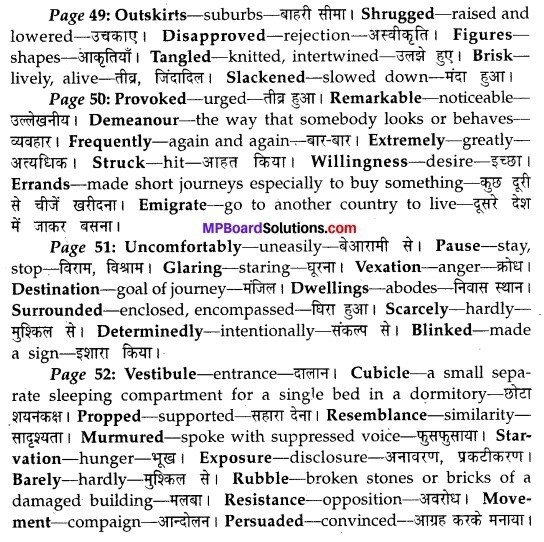

Two Gentlemen of Verona Some Important Pronunciations

Hope that the above shaped information regarding the Madhya Pradesh Board Solutions for 10th English Chapter 6 Two Gentlemen of Verona Questions and Answers is useful for making your preparation effective. View our website regularly to get other subjects solutions.






